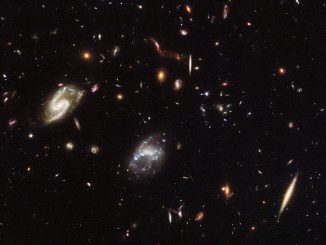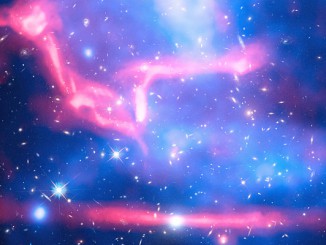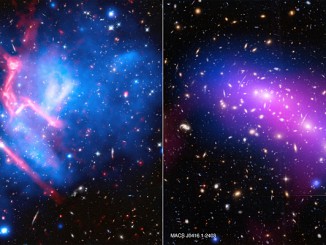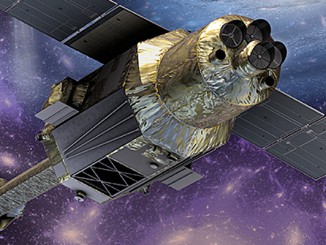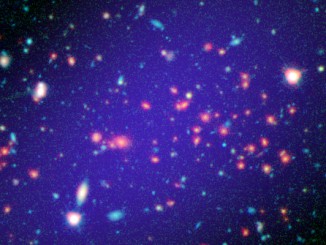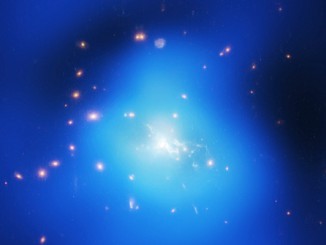
A young mammoth cluster of galaxies sighted in the early universe
Astronomers have uncovered evidence for a vast collection of young galaxies 12 billion light years away. The newly discovered “proto-cluster” of galaxies, observed when the universe was only 1.7 billion years old (12 percent of its present age), is one of the most massive structures known at that distance.

